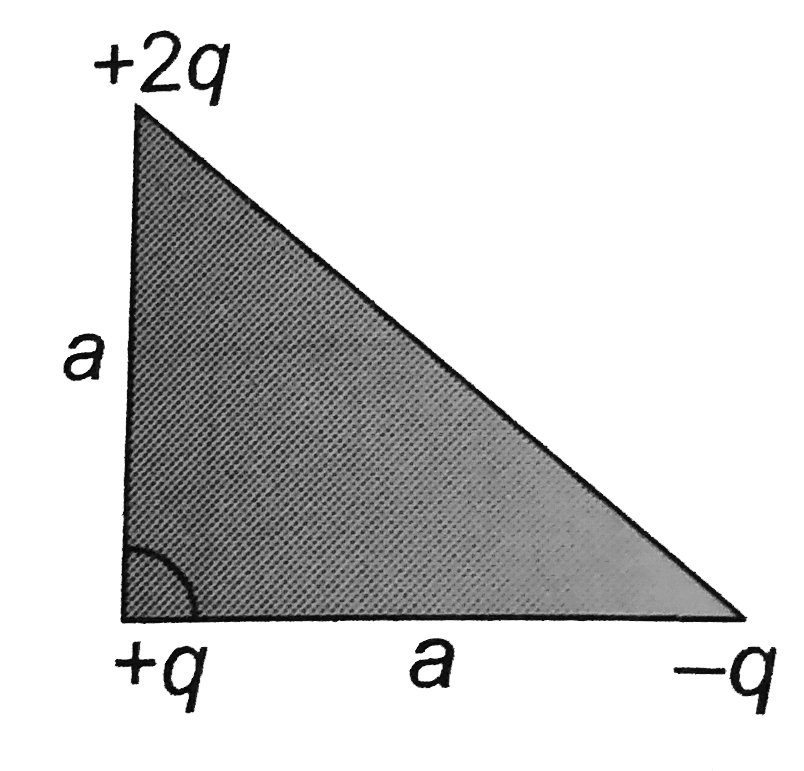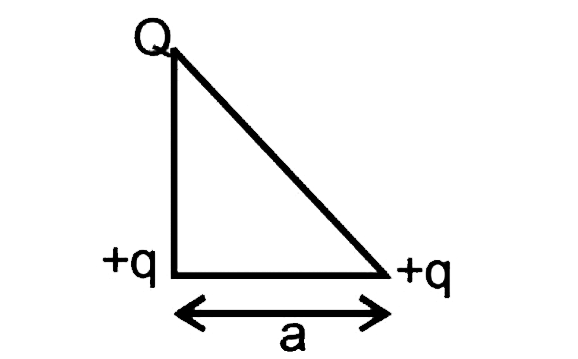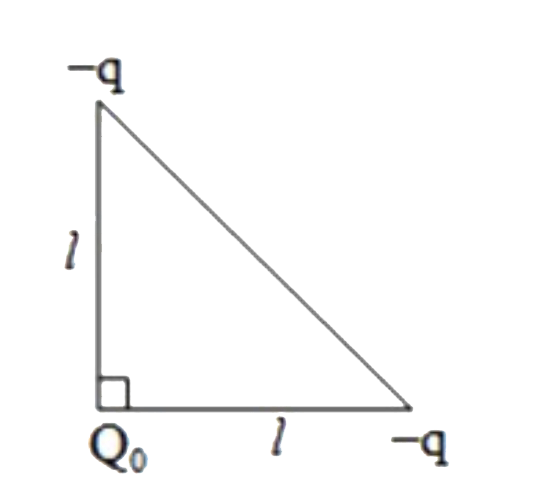As shown in the figure, charges and are placed at the vertices and of an isosceles triangle. The potential at the vertex A is

Zero
Step by step video & image solution for As shown in the figure, charges and are placed at the vertices and of an isosceles triangle. The potential at the vertex A is by Physics experts to help you in doubts & scoring excellent marks in Class 12 exams.
Updated on:21/07/2023Topper's Solved these Questions
- ELECTROSTATICS BOOK - ERRORLESS CHAPTER - ELECTROSTATICS EXERCISE - Ordinary Thinking Objective Questions (Electric Dipole)
38 Videos
- ELECTROSTATICS BOOK - ERRORLESS CHAPTER - ELECTROSTATICS EXERCISE - Ordinary Thinking Objective Questions (Electric Flux and Gauss.s Law)
28 Videos
- ELECTROSTATICS BOOK - ERRORLESS CHAPTER - ELECTROSTATICS EXERCISE - Ordinary Thinking Objective Questions (Electric Flux and Gauss.s Law)
28 Videos
- ELECTRONICSBOOK - ERRORLESS CHAPTER - ELECTRONICSEXERCISE - Selv Evaluation Test
23 Videos
- HEATING AND CHEMICAL EFFECT OF CURRENTBOOK - ERRORLESS CHAPTER - HEATING AND CHEMICAL EFFECT OF CURRENTEXERCISE - Self Evaluation Test
14 Videos
Similar Questions
If one of the equal angles of an isosceles triangle is65∘, then the angle at the vertex is triangle is,
View SolutionThree charges Q+q and + q are placed at the vertices of a right -angle isosceles triangle as shown below. The net eletrostatic energy of the configuration is zero if the value of Q is :

View Solution
Knowledge Check
As shown in the figure, charges +qand−q are placed at the vertices B and C of an isoscles triangle. The potential at the vertex A is
 A14πε0.2q√a2+b2BZeroC14πε0.q√a2+b2D14πε0.(−q)√a2+b2
A14πε0.2q√a2+b2BZeroC14πε0.q√a2+b2D14πε0.(−q)√a2+b2Three charge +q,−q, and +2q are placed at the vertices of a right angled triangle (isosceles triangle)as shown. The net electrostatic energy of the configuration is:
 A−kq2a(√2+1)BKq2a(√2+1)C−Kq2a(√2−1)DNone of these
A−kq2a(√2+1)BKq2a(√2+1)C−Kq2a(√2−1)DNone of theseThree charges Q, +q and +q are placed at the vertices of a right-angled isosceles triangle as shown. The net electrostatic energy of the configuration is zero if Q is equal to
 A(a) −q1+√2B(b) −2q2+√2C(c) −2qD(d)+q
A(a) −q1+√2B(b) −2q2+√2C(c) −2qD(d)+q
Two point charges +q and -2q are placed at the vertices B and C of an equilateral triangle ABC of side 'a' as shown Obtain the expession for (i) the magnitude ,and (ii) the direction of the resultant electric field at the vertex A due to these two charges .
View SolutionTwo point charges +q and -2qare placed at the vertices B and C of an equilateral triangle ABC of side 'a' as shown in Obtain the expression for
The magnitude ,
(b)
The direction of the resultant electric field at the vertex A due to these two charges.
(c)
View SolutionThe base of vertices of an isosceles triangle PQR are Q 1,3 and R -2,7.The vertex p can be :
View SolutionThree charges Q0 - q and q are placed at the vertices of an isosceles right angle triangle as in the future. The net electrostatic potential energy is zero if Q0 is equal to

View SolutionThree charges Q0,−q and −q are placed at the vertices of an isosceles right angle triangle as in the figure. The net electrostatic potential energy is zero if Q 0 is equal to :

View Solution
